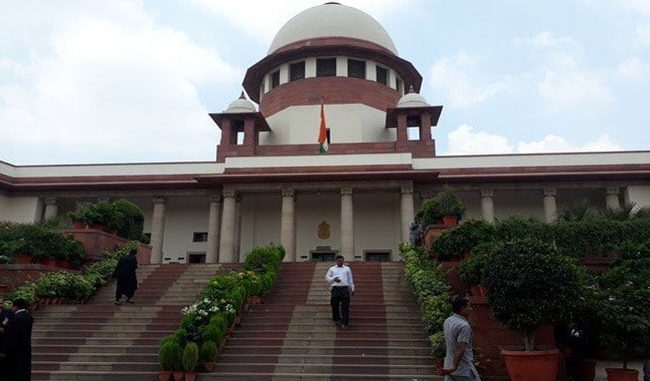
In News
The Cabinet gave its nod to increase the strength of the Judges in the Supreme Court by 10%.
In-Detail
- The Chief Justice of India had requested the Government to increase the number of Judges in the SC over a month ago.
- Acting on the request, the union cabinet decided to increase the strength fro the current 31 to 34.
- A Bill in this regard will be placed in the ongoing Parliament session.
Why the Need?
- The Supreme Court is facing a large backlog of pending cases which currently stands at 60,000 cases.
- The existing 30 Judges excluding the CJI are finding it an uphill task to clear the cases.
- In 1988, the judges’ strength was increased to 26 from 18 and later in 2009, it was further increased to 31.
- More judges are needed to keep up with the increasing number of cases and efficient working of the Supreme Court.
Pending Cases in High Courts
- Across the country, there are 24 High Courts and the pending cases have increased by 375,402 or 9.7% from 2015 to 2019.
- This despite sanctioning more judges in many high courts.
- In 2014, the sanctioned strength of judges for the High Courts were 904 which was increased to 1079 by the end of 2018.
- The reason behind the increased pendency of cases was due to the current working strength of the Judges. In 2018, 679 judges were working while 37% of the sanctioned strength falling vacant.
What About Subordinate Courts?
- As per the National Judicial Data Grid, there are 3.03 crore civil and criminal cases pending in the subordinate courts across the country.
- Here too the sanctioned strength has been increased from 19,518 to 22,833 till the end of 2018. yet, the pendency of cases has increased due to the vacant posts. While the working strength of subordinate court judges has increased from 15,115 to 17,701, there is still a shortage of 5,132 judges.
Alternative Avenues
- To dispose off the pending cases, the Department of Justice has launched the Nyaya Mitra Scheme in 2017, where retired judicial officers and retired government officers with a legal background are appointed as Nyaya Mitras.
- They assist the court they are assigned to in reducing the pending cases and speed up the process of justice delivery.
- They will handle cases that are more than 10 years old.
- Another avenue for disposing of cases is the Lok Adalats. This alternative dispute redressal mechanism will settle cases that are pending in the court of law or in the pre-litigation stage amicably.
- Mediation is another alternative mechanism through which pending cases are being settled out of Court.
Conclusion
SC and HCs have to do much more to reduce the number of pending cases in the country. Though increasing the strength of the Judges will reduce the burden to an extent, with an increasing number of citizens accessing Courts to get justice, the number of cases may go up.

Leave a Reply
You must be logged in to post a comment.